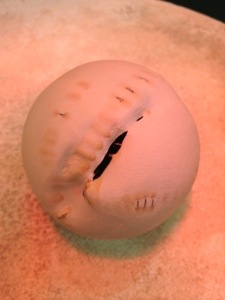Swift (left) and Vision (right), 2007
Interval, 2004
Minimalist artist John McCracken plinth like sculptures, visually tick all the boxes for a work of minimalist art: solid geometric shapes, flawless surfaces, impersonal, looking for an “alternative descriptions of art (Rian 1996)”. As with much minimal art McCracken’s “planks” as he referred to, hold a presence in the white cube of the gallery. McCracken’s work may hint to industrial fabrication, however, McCracken hasn’t taken the production out of the artist hand which is characteristic of the work of his compadre’s, Dan Flavin and Donald Judd, “he laboured as a craftsman to reproduce the finish of mass-produced objects (McNay 2011).” McCracken worked intensively the sculptures relating the process to surfboards, working the pigment onto the structures. “For each work, McCracken constructs a rectangle in wood and covers it with canvas. He then saturates it with coloured resin which he sands and buffs to perfection (Rian 1996).”
It is this notion that McCracken’s work visually looks like it is machine-made, however he has to work and rework the pieces to achieve this finish, achieving a pure form which many minimal artist’s achieved through removing the artist’s hand from production and using elements of industrial fabrication.
Jeff Rian (1996) John McCracken. Frieze. http://www.frieze.com/issue/review/john_mccracken/
Michael McNay (2011) John McCracken Obituary http://www.guardian.co.uk/artanddesign/2011/apr/19/john-mccracken-obituary









